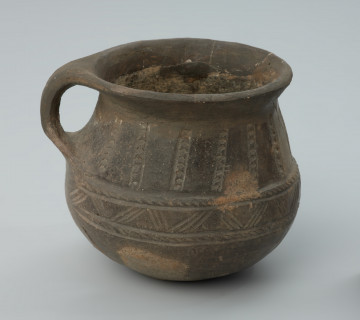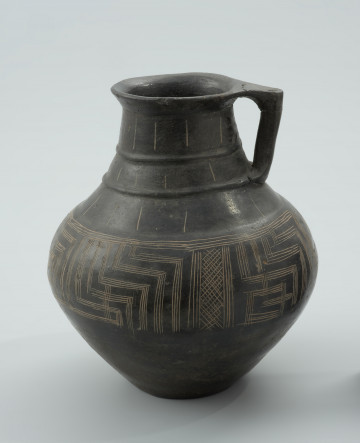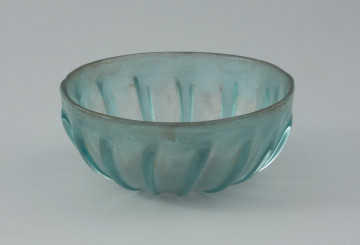
Mug with ear
National Museum in Szczecin
Part of the collection: Antiquity
The unique distaff is made of 5 cylindrical and 2 profiled amber segments on an axis. It should be dated to the earlier Roman period (1st-2nd centuries). Single distaffs are known only from the area of the Wielbark culture. In the ancient world, they were an attribute of three Moirai, the spinners of the threads of human fate: Clotho, Lachesis and Atropos. The presented distaff was found approximately in the 1930s, in the area of the sandpit in Lubowidz, Lębork poviat. It is unknown whether it was a part of a grave assemblage or a single find. The cemetery in Lubowidz was discovered by accident in 1898. In the following years, further discoveries were made. Due to the progressive deterioration of the site, the rescue excavations were carried out between 1938-1939 by Helmut Agde on behalf of the Pommersches Landesmuseum in Szczecin. He examined 75 acres of the cemetery area and discovered 308 graves in total, including 241 inhumations and 60 cremations. All objects discovered by chance were systematically inventoried by Eduard Stielow, who was the local guardian of the monuments in Lębork in the 1930s. The items discovered in the cemetery in Lubowidz in 1898, 1926, 1932, 1934 and 1938 were donated to the Museum in Szczecin and to the Westpreussisches Provinzial-Museum in Gdańsk.
Bartłomiej Rogalski
Author / creator
Dimensions
cały obiekt: width: 22.3 cm
Object type
furnishings and equipment; weaving equipment; distaff
Technique
rolling; grinding
Material
amber
Creation / finding place
Owner
Muzeum Narodowe w Szczecinie
Identification number
Location / status

National Museum in Szczecin

National Museum in Szczecin

National Museum in Szczecin
DISCOVER this TOPIC
National Museum in Szczecin
DISCOVER this PATH
Educational path